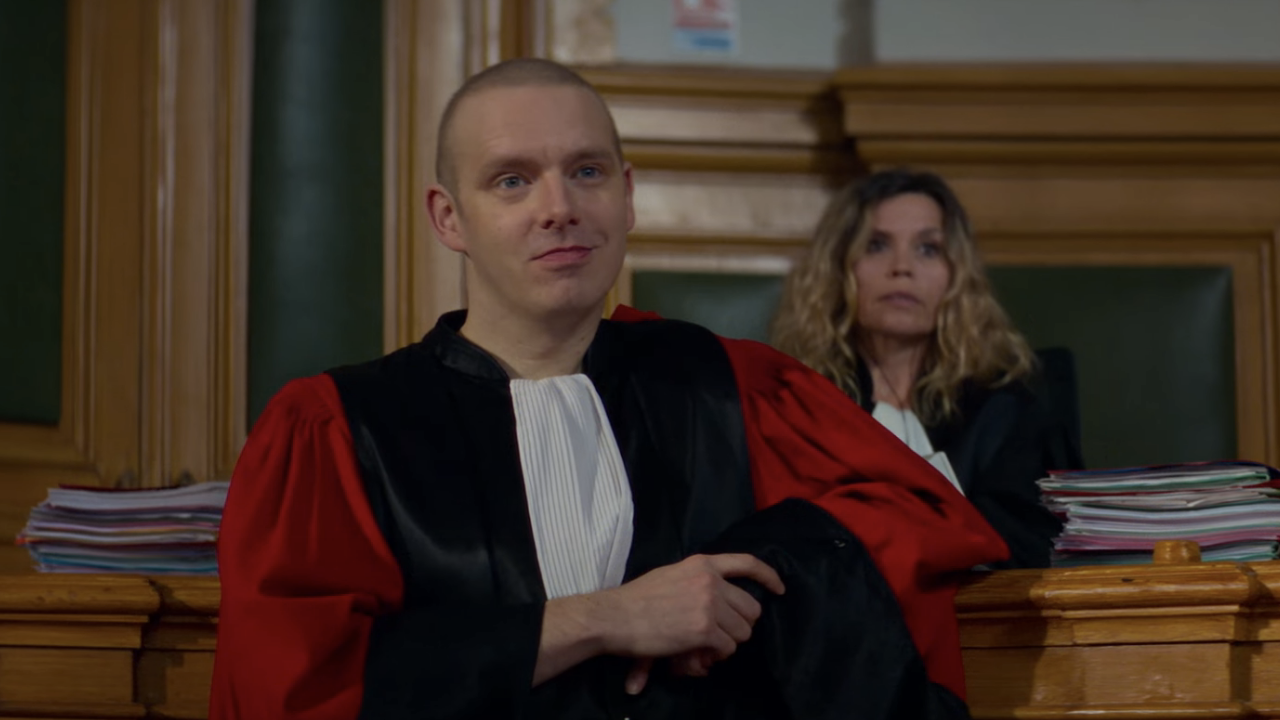The popularity of the true-crime genre is at an all-time high. Podcasts, television programs, and movies dive into cold cases and unsolved mysteries on a regular basis, with some of the best true-crime programs surfacing on streaming services like Hulu and Netflix. They can be dramas, documentaries, and even comedies like the winning Only Murders In The Building. But because so many people have been tuning into true-crime, audience tastes have refined, and they continue to seek the best of the best when it comes to detail-unraveling cases. Allow me to point the hungriest clue-seekers to the exquisite Anatomy of a Fall, which Neon purchased before it played the Toronto International Film Festival.
Every detail matters as you watch Justine Triet’s Anatomy of a Fall unfurl. And not just the actual actions that we are observing, but also the motivations behind each move, which will change as facts are presented, and analyzed. Triet has constructed a meticulous courtroom drama that’s as interested in the manufactured narrative as it is in the cold-hard facts of the central case. Allegiances shift as each new reveal dribbles out. But a tidy, satisfying solution isn’t going to be on the menu, so brace for the kind of ambiguity that guarantees you’ll chew over Anatomy of a Fall for hours, days, and weeks after.
The spectacular Sandra Huller stands trial as Sandra Voyter, a wife and mother suspected of murder when her husband, Samuel (Samuel Theis), is found dead outside the family’s villa. Was he pushed? Did he jump? How did he sustain the severe wound on his head? And why did the couple’s visually impaired son, Daniel (Milo Machado Graner), choose to walk his dog, Snoop, minutes before the death occurred.
Triet forgoes emotion in this clinical study of justice in the wake of loss. “I did not kill him,” Sandra confesses to her attorney, to which he candidly replies, “That’s not the point.” In a trial, actual guilt is almost secondary to whether or not the defense can spin a credible story that sways the jury, while also keeping the facts in check. That same attorney tells Sandra, “A trial is not about the truth,” and you’ll nod in agreement if you have been following the manipulations of the judicial system in America.
There’s no debating how excellent Sandra Huller is in the lead role. She anchors every scene in Anatomy of a Fall, reeling and pivoting with each twist and turn in the case – most of which I’ll avoid discussing here so you can invest during your own screening. It’s a raw treatment of a couple at odds, and asks the audience difficult questions. How would you behave, talk, and act if you knew that a conversation you were having might one day be used as evidence in a murder trial? Huller represents a couple’s life and marriage on trial, and she’s magnificent, shouldering the heavy burden of jealousy, guilt, frustration, and hopelessness as criminal motivations are dangled in front of the jury, and in front of the audience. It’s an unforgettable performance.
Anatomy of a Fall needs every second of its 150-minute run time. Justine Triet employs prestige-TV pacing, doling out clues and misdirections that keep you riveted, invested, and skeptical as the case plays out. She wrings suspense out of the hard truth that every fact has two interpretations, and even after a result is reached, there are real humans living with the consequences after the trial is won or lost. You’ll debate the definition of the Fall that’s being analyzed, and you won’t come up with an easy answer.
If you like Anatomy of a Fall, there are plenty of like-minded true-crime stories waiting for you on Netflix.

